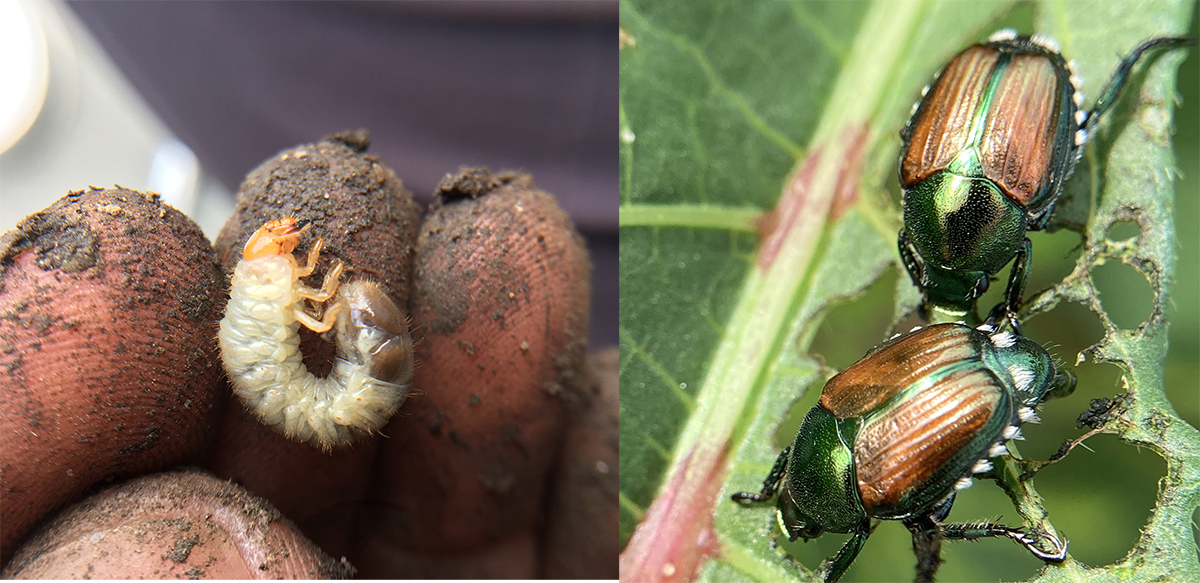
By Kait Chapman, Extension Educator in Lancaster County
Every year, Nebraska Extension receives many calls from people across the state on one of the most problematic plant pests: Japanese beetles. The invasive beetle feeds on the leaves, flowers or fruit of over 300 species of plants, from agricultural commodities such as soybean and corn, to trees like linden, cherry and apple, to horticultural favorites like roses, marigolds and basil. In Nebraska, now is the time to treat to get an early handle on management of these pests.
GRUB MANAGEMENT
Japanese beetle grubs are C-shaped and creamy-white in color. These grubs are found in soil and feed on the roots of turf grass, causing browning and dead patches. To prevent grubs in the lawn, turf can be treated with an insecticide containing chlorantranilprole in May and June.
ADULT MANAGEMENT
Adult Japanese beetles are approximately 1/2-inch long with metallic green bodies and copper-colored, hardened forewings. Each beetle has a row of white hair tufts on either side of their abdomen. Beetles skeletonize leaves by feeding on tissue between major leaf veins. While the damage may appear alarming, most damage is superficial and will not kill older, established plants. Damage can be prevented by using a systemic insecticide treatment, like imidacloprid, in May. Systemic insecticides are taken up by the plant’s vascular system to provide it protection from pests feeding on foliage. It’s important to note, however, that systemic insecticides cannot be used on Linden trees due to potential risk to pollinators.
Throughout June, July and August, the easiest way to deal with the beetles that arrive, is simply picking them off plants and placing them in a bucket of soapy water. For larger infestations, insecticidal products containing carbaryl, bifenthrin, neem oil or pyrethrins may also provide some relief from Japanese beetle feeding. Many of these insecticides are toxic to pollinators and should not be applied to blooming plants. Always follow the pesticide label directions.
Japanese beetle traps are NOT recommended as they attract more beetles than they're able to capture.